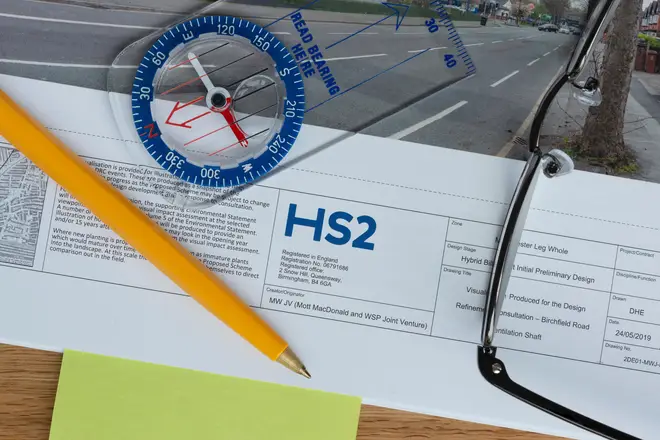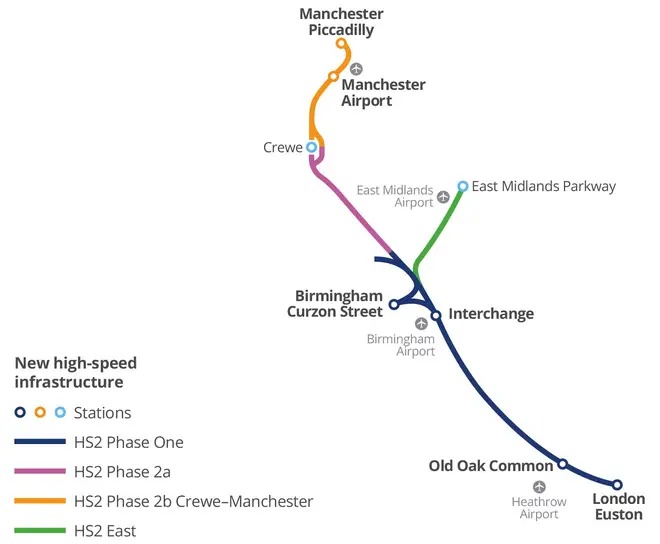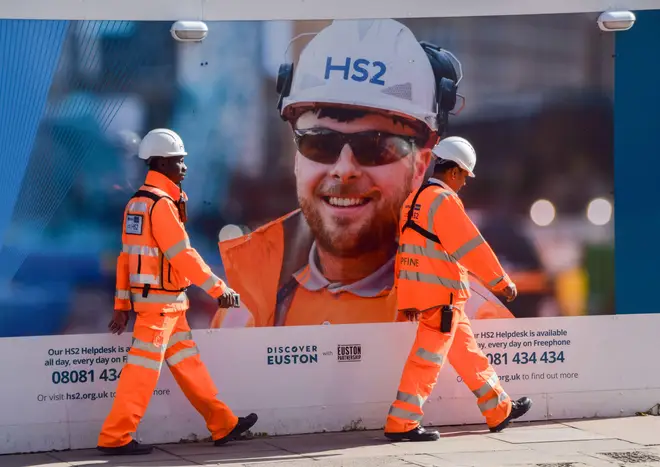
Nick Abbot 10pm - 1am
2 October 2023, 17:02 | Updated: 2 October 2023, 17:41

HS2 has been dubbed as the UK's largest infrastructure project, with hopes to revamp national transport as we know it...but where is it meant to even go? And could it be scrapped?
In simple terms, HS2 was announced to connect London with areas across the Midlands and north of England, considerably much faster than we are used to now.
For example, it currently takes around two hours and 28 minutes to get from Birmingham to Manchester. With HS2, the same journey would take 41 minutes.
In 2010 HS2 was announced as part of David Cameron's election campaign and the former PM committed £20bn to a high speed rail project.
Fast forward to the November 2015, with figures updated in line with inflation, it was predicted it would cost £55.7bn.
In 2021, it was estimated that such a huge project would cost anywhere between £72bn and £98bn.
Now, amid the Ukraine-Russia war in 2023, economists predict a total cost of £107bn.
Read More: Sunak insists UK is not a ‘laughing stock’ as he fails to rule on HS2’s future
What would we get out of HS2?
Well, the aim is to run 18 trains an hour in each direction to and from London - at speeds of up to 224mph - compared to between two and six an hour on Europe's high-speed railways.
It involves the construction of more than 300 bridges and 70 viaducts for the London-West Midlands phase alone.
The project is designed to meet the long-term growth in demand for rail services, boost connectivity by making journeys faster and easier, and help economic growth across the UK.

The initial phase of the line is slated to include stations at London Euston, Old Oak Common in the western part of London, as well as Birmingham Interchange and Birmingham Curzon Street.
Nevertheless, there are apprehensions that the London Euston station terminus might face cancellation, as its progress has been temporarily halted owing to escalating expenses.
The line could instead end in Old Oak Common, requiring passengers to use the Elizabeth Line to get into central London.
In the second phase, trains are supposed to go to Manchester Airport and Manchester Piccadilly in the northwest or follow existing routes through Wigan, Crewe, and Stafford.
However, the second phase could be scrapped, as part of the government's efforts to cut costs even more, though Number 10 has insisted no official decision has been made.
The eastern extension has was cancelled in 2021, which would have connected Manchester and Leeds with London.
Read More: Govt slammed for 'betraying the North' as HS2 Leeds leg scrapped

Why have costs risen so much?
One reason: inflation.
Transport Secretary, Mark Harper, said earlier this year: "We have seen significant inflationary pressure and increased project costs, and so we will rephase construction by two years, with an aim to deliver high-speed services to Crewe and the North West as soon as possible after accounting for the delay in construction."
Complex issues involving the discovery of asbestos and archaeological remains, and the need to divert more gas and power lines than expected, have caused problems too.
More money was also needed to buy properties to make way for the rail line.
Even after these have been accounted for, there is uncertainty around the cost of extending London's Euston station to accommodate the high-speed trains.